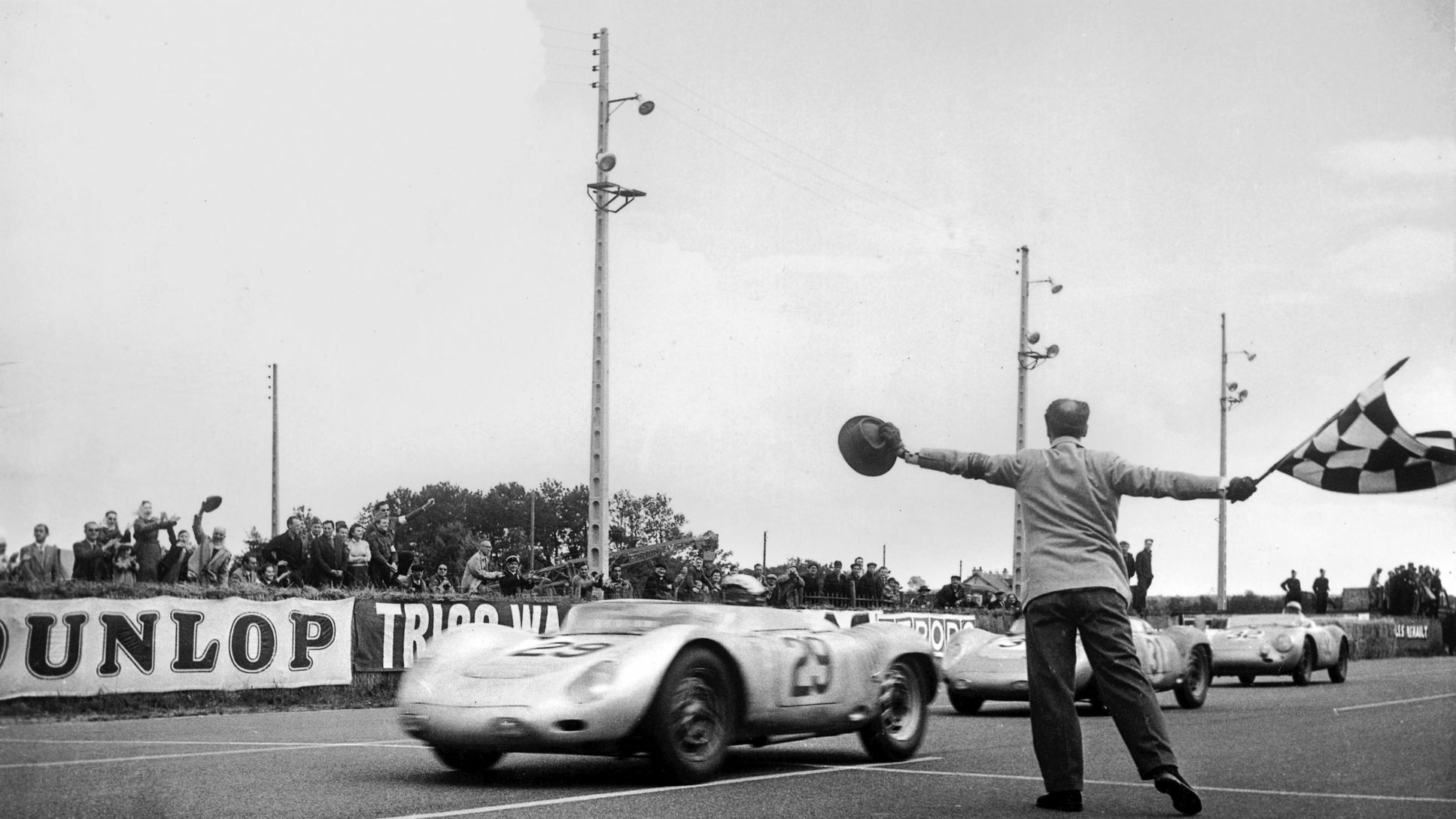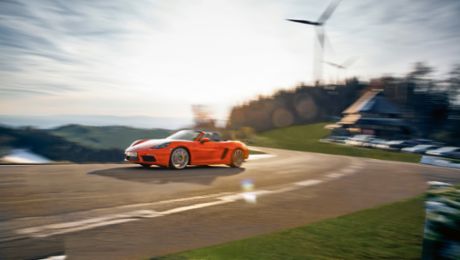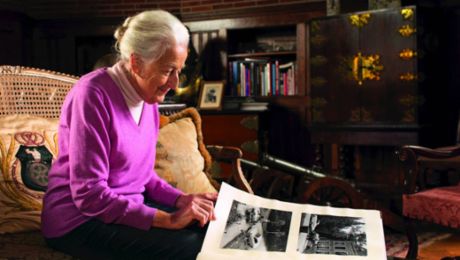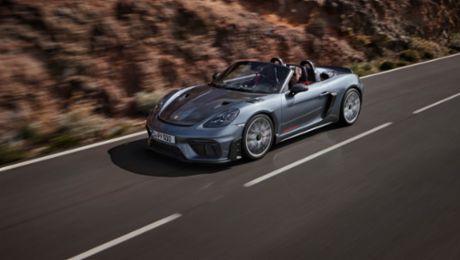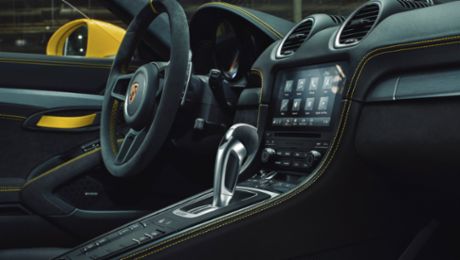Mid-mounted engine, lightweight construction, very modern design, and a high-powered four-cylinder engine express the philosophy behind the legendary Porsche Spyders with type designations 550 and 718. Designed for circuit, road, and hill-climbing races, these thoroughbred sports cars chalked up extraordinary successes from 1953 to the mid-1960s – both for Porsche and for many customer teams. These fast and agile cars enabled private race-car drivers as well as factory drivers such as Wolfgang Graf Berghe von Trips, Hans Herrmann, Graham Hill, Ricardo Rodríguez, and Joakim Bonnier to claim more than one thousand victories, many of them against considerable odds. In spite of their comparatively small four-cylinder boxer engines, the cars repeatedly succeeded in beating what looked like more powerful competitors.
The history of the 718 and the 550 Spyder is a story of step-by-step development – which is also typical of Porsche. As the first thoroughbred race car from Zuffenhausen, the Type 550, built beginning in 1953 (89 cars made), launched the evolutionary series of race cars with mid-mounted engines that became icons of automotive history. The 550 was followed in 1956 by the 550 A Spyder (forty cars made), which featured a tubular space frame and high-output power train. Italian driver Umberto Maglioli drove a 550 A to a sensational win in the 1956 Targa Florio, the most challenging road race of the time.
RS stands for Rennsport
Nearly as legendary as the car itself is its power train with four overhead camshafts, known to this day as a Fuhrmann engine. As successor and further development of the 550 A, the 718 RSK debuted in 1957 (34 cars made). Its name paid tribute to both racing and technology: the RS stands for Rennsport (“racing sport”) and the K reflects the configuration of the newly developed front torsion rods on its back, which resemble the letter K.
The 718 also had a tubular frame of seamless steel to provide additional strength at the lowest-possible weight. Its engine, suspension, and drum brakes were also optimized. The 718 RSK celebrated successes worldwide: in Le Mans, on the Nürburgring, in Argentina, in Riverside, California, and in numerous hill-climbing races. Both the 550 A Spyder and the 718 RSK demonstrated the enormous potential of these Porsche designs in Formula Two as well. Further developed as a single-seater, the 718/2 won the 1960 Formula Two manufacturers’ world championship.
When the new FIA regulations stipulated closer ties to production cars, Porsche responded in the 1960 season with the 718 RS 60 (19 cars made), which quickly became the standard for the 1.6-liter class. Its greatest successes included overall victories at the Targa Florio, the 12 Hours of Sebring, and the European Hill Climb Championship in 1960 and 1961. The 718 RS 61 Spyder (13 cars) made its first appearance in October of 1960. This new evolutionary advance in the 718 was used primarily by customer teams. One of its technical highlights was a new rear axle with triangular control rods. In order to exploit the potential of the 718 Spyder for the 24 Hours of Le Mans, the 718 RS 61 was further developed into a coupe version.
In the 1961 season, the 718 GTR was still entering races with a four-cylinder engine, whereas in 1962 it featured a two-liter eight-cylinder variant as well as disc brakes. The 718 W-RS Spyder, of which only one was built, also used these two types of engines for its races from 1961 to 1964. Affectionately called “Grandmother” by the mechanics because of its long racing career, it won the European Hill Climb Championship in 1963 and 1964. And once again showed the potential of Porsche’s mid-mounted engine design.
